Anchoring stern-to can be daunting. Here's how we do it.
Knowing how to anchor stern-to is critical if you want to enjoy your sailing vacation in the Mediterrenean. By anchoring stern-to, we mean dropping an anchor, backing the boat up and tying it off against the dock/riva. If you are sailing in Greece, Croatia or any of the other major destinations in the Mediterranean, this skill makes the difference between enjoying your vacation and damaging your yacht. In this series on sailing lessons (and YouTube Episode shown below), we present to you a comprehensive guide on anchoring stern-to.
The four steps to conducting a great anchor-stern-to procedure are as follows:
So let's look at each in turn.
1. The Setup: Anchor Stern To
Like any maneuver, if you have the setup done correctly, you stand a chance at succeeding. Let's look at the elements to setting up for an anchor stern to. This is the seventh of our Sailing Lessons Caribbean Youtube series.
How to set up to throw a line

- Tie the line outside the boat.
- Coil the line with large, neat coils
- For the last part, coil the line with small, basketball sized coils
- Separate the two coils
- When you throw, throw the small one and drop the large one
How to set up fenders

- Set up depending on your surrounding boats/dock
- Here we put the fenders at the widest part of the boat, equidistant from each other and at the same height (with the top of the fender just above the toe-rail).
- Determine the knot you will use, either clove hitch or round turn & two half hitches. See here if you want to be reminded of your sailing knots. Short-cut to the clove hitch and to the round turn & two half hitches.
- Here we set up with a round turn & two half hitches
- Tie the dinghy either to the mid-ships cleat or if it's a tight fit, to the bow (front) cleat.
- If you tie it at mid-ships on the leeward side (ie. the downwind side) of the boat, your dinghy can double up as a giant fender if things go wrong.
How to Prepare the Anchor

- Always have the with anchor ready to go. The aim for the person dropping the anchor is to be able to drop the anchor at the instant the skipper asks for it to be done.
- Every boat is different, but on Libertas, with such a vertical bow, we need to be very careful when preparing for the drop, so we don't give the bow an almighty wack when making the anchor vertical. In this video, Jack does the initial lower by hand.
2. The Lead-in: Anchor Stern To (03:33)

It is good practice to go past the spot you intend to drop and scope it out. Look at depth, observe the currents, check out your cleat situation, that sort of thing.
Find out if you are going to cross any other lines or anchors, and determine whether this will be a problem or not.
It's critical to know which side the wind comes from. If there are no currents to speak of, the wind will be the deciding factor between an easy or a difficult maneuver.
Always communicate with the dock/harbour staff prior to starting the maneuver . And just as importantly, always get on with them. Some parts of the Med have notoriously "challenging" dock staff. Whatever, just approach it with a zen-like attitude and get on with them.
When approaching, as a general rule think in right-angles. By doing this, you will be able to assess the distances with much more accuracy than if you were to do diagonal, sloppy, s-like turns.
This is not always possible. If there is a strong cross-wind and/or current running, you may need to point your bow at a strange angle in order to have your boat lay out your anchor chain in a long, straight line.
We like to be at least 4-5 boat-lengths off the dock, then bring the boat 4-5 boat-lengths down-wind (or current), perpendicular from where we will drop the anchor.
Ideally you want to back the boat into the wind (or current), so you maintain better control of your boat.
As a rule, once you begin going in reverse, you want to keep it in reverse. This is because it can take some time for your boat to settle down when it is in reverse, so by maintaining your engine astern (ie. reverse), you keep things simple for yourself.
On this particular approach, before the final turn (at 5:39) James actually takes the boat out a bit further from the dock, to give Libertas the most amount of run-up, affording her the best opportunity to drop the most amount of anchor chain. He's doing this as he is telling about the benefits of right-angles.
Depending on how tightly your boat turns, make a strong turn just as you are perpendicular to your place on the dock.
3. The Drop (6:22)

Given you have determined how far off the dock you want to be using this method, you have done the distance estimation beforehand. That's one of the strengths of this method. It helps keep you relaxed.
Start dropping the anchor just as you are near the end of your final turn.
Depending on depth, it takes the anchor around 5-20 seconds to touch the bottom.
Your speed is the slowest possible speed that you can have whilst clearly maintaining your steerage (ability to steer).
A key job for the person dropping the anchor is to avoid running out of chain. They way they do this is by keeping an eye on the remaining chain in the anchor box.
At a certain point in the drop, the boat will catch up with the anchor chain, such that the person dropping the anchor actually controls the speed of the boat in reverse. This is fine.

Depending on the walk of the propeller in reverse, the person at the helm can actually use walk to act as a quasi "stern-thruster" at times if required. Regardless, be well aware of your prop walk, as more revs could simply mean your stern walks over more in the wrong direction.
On Libertas we have 70m of relatively heavy chain, with a 20kg Rocna anchor at the end. This provides great holding. Never skimp on anchor or chain if you are buying one. It is maybe the most important single item on the boat.

The person dropping the anchor keeps an eye on the amount dropped and uses a hand signal to indicate this to the helm (on Libertas we use "one finger equals ten meters of chain")
The aim on an anchor stern-to is to use as much of your anchor chain as possible. With this in mind, a great outcome is to have less than 5 meters of chain left in your anchor box at the end of the maneuver.

Towards the end of the drop, the hand communications between the helm and the anchor-dropper become paramount.
The helm will tell the anchor-dropper to keep dropping, until a point, then to stop.
4. Tying Up (08:51)
The helm must be very aware of distance to the dock at the end of the maneuver. If the helm has allowed too much chain to drop, he must be able to stop the boat with the engine. If the helm has correctly estimated the amount of chain, then the anchor itself will pull the boat up, and he can "lean" on the anchor by keeping the boat in gentle reverse.

The helm, or anyone assisting on the boat, will then throw the windward line first. For all stern-to docking methods, the windward line is the crucial line.
Once the windward line is secured, the boat can then throw (or lasso) the leeward line.
The boat can remain in gentle reverse, to maintain anchor tension, while the stern lines are being secured.
Be very careful to keep the boat in reverse until the stern lines are secured. Otherwise you may get fingers caught in lines being cleated.

Summary
Key tips from this anchor-stern-to method are:
- Have your fenders on both sides, in particular the leeward side;
- Try and keep things at right angles where you can;
- When you secure your stern line, always secure the windward side first;
- Have great communications between the person dropping the anchor and the person on the wheel;
- Let out as much anchor chain as you possibly can.
Sailing Virgins is a company that take adventurous people in their 20s and 30s on full-on sailing adventures, and turns them into skippers, so they can sail their own boat. Click here to check out our 7-day Fast-Track Intermediate Course.
Check out some of our other posts, such as How To Check In/Out A Charter Boat. Subscribe to receive a new sailing tips episode every week by clicking here.

Thanks to Celine Freixe for shooting and editing.
Thanks to Ford and the staff at the wonderful dock staff at Marigot Bay Resort, Capella Marina, in St Lucia. Make Marigot a key destination if you are ever sailing in these waters.
Music cred : S3A - Bush (Sydji Remix) https://soundcloud.com/sydji



